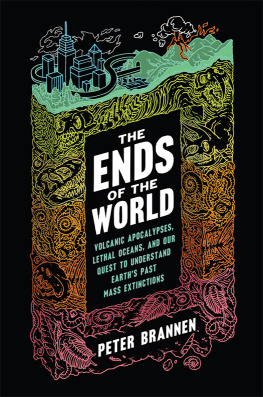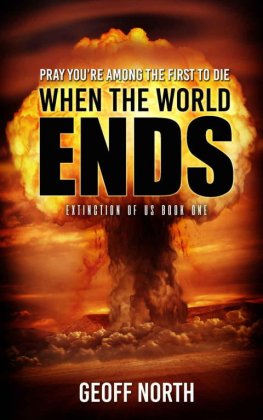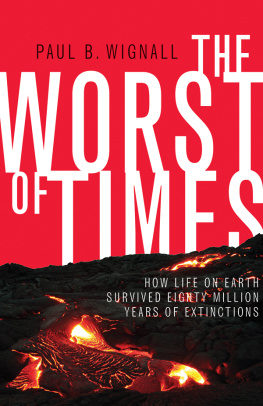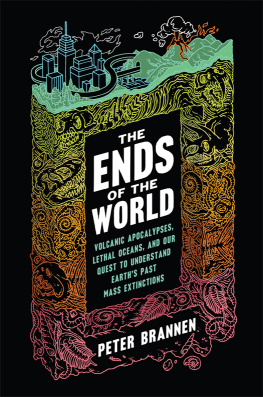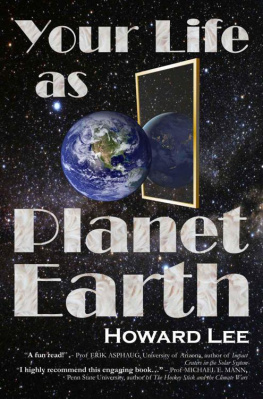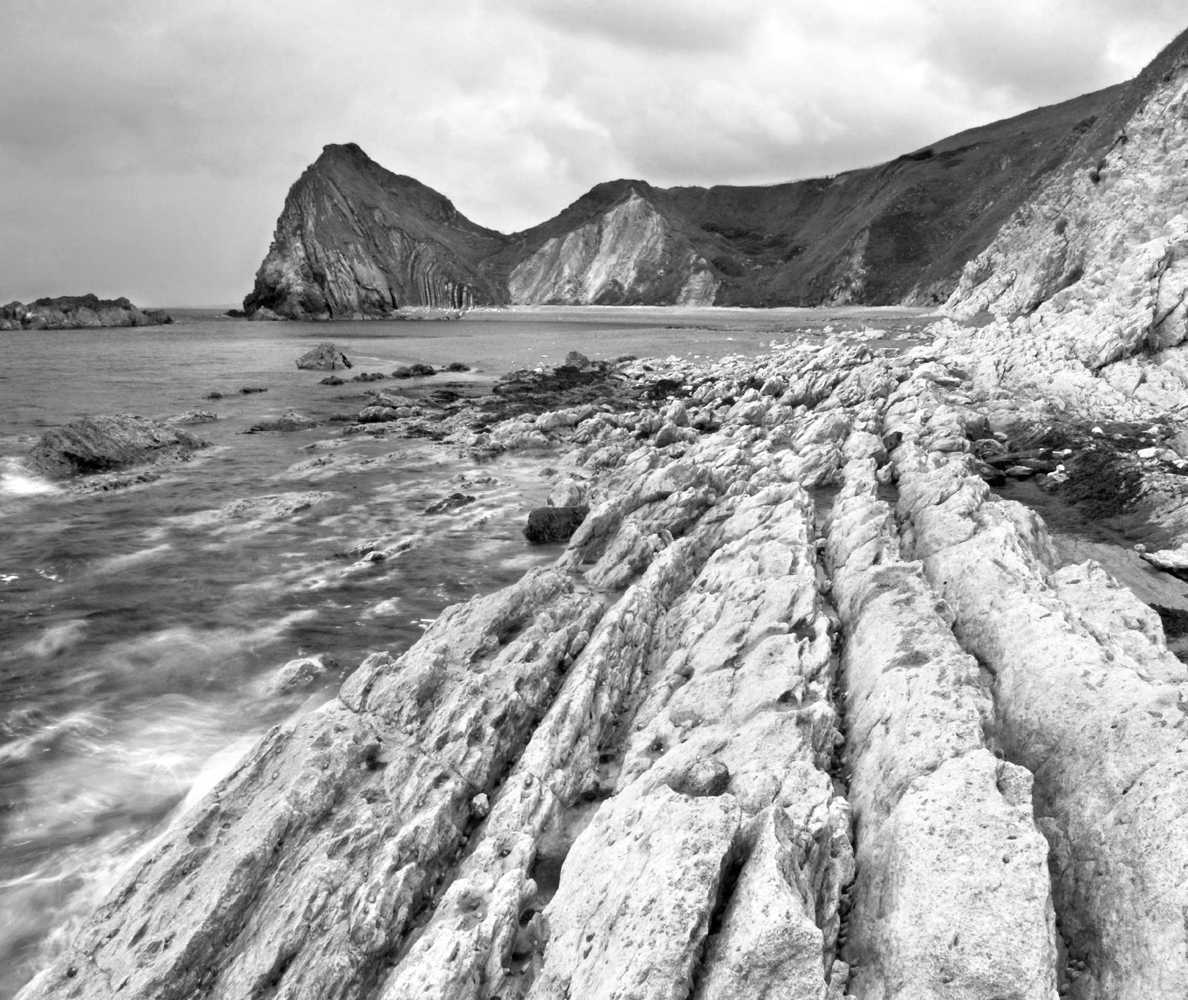It is the dawn of a new geological age. A teeming swarm of Homo sapiens gathers on the banks of an estuary at the edge of the North American continent. The glaciers have retreated; the seas have risen more than 400 feet since the last ice age; and the gleaming new steel-and-glass hives of Manhattan rise up from the marshes. Looming over the confident city, just across the Hudson River, is the sheer cliff face of the Palisades. The gigantic columns of basalt sit in unimpressed, stony silence, as they have for 200 million years. These cliffs, covered in highway weeds and graffiti, are monuments to an ancient apocalypse. Theyre made of magma that once fed burbling fountains of lava at the surfacelava that once smothered the planet from Nova Scotia to Brazil. The eruptions flooded the atmosphere with carbon dioxide at the end of the Triassic period, roasting the planet and acidifying the oceans for thousands of years. Brief blasts of volcanic smog punctuated this super-greenhouse with cold. The runaway volcanism covered more than 4 million square miles of the planet and killed off more than three-quarters of animal life on earth in a geological instant.
I struggled to keep up with Columbia University paleontologist Paul Olsen as he bounded up the scraggly path leading from the banks of the Hudson to the base of the Palisades. In front of us, smothered under this enormous wall of now-solid magma, were the remains of a quarter-billion-year-old lake bottom, complete with exquisitely preserved fish and reptile fossils. Behind us, faintly droning, was the skyline of New York City.
I asked Olsen whether the city across the river would be preserved for future geologists to discover, like this peaceful Triassic diorama at the bottom of the rocks. He turned to consider the scenery.
You might have a layer of stuff, he said dismissively, but its not a sedimentary basin, so eventually it would erode away to nothing. Youd have bits that would make it out into the ocean and would be buried and might show upsome bottle caps, maybe. There would be some pretty heavy-duty isotopic signals. But the subway system wouldnt fossilize or anything. It all would erode away fairly quickly.
It is from this disorienting perspective that geologists operate: to them, millions of years run together, seas divide continents, then drain away, and great mountain ranges erode to sand in moments. Its an outlook thats necessary to cultivate if one wants to get a handle on the staggering depths of geological time, which recedes behind us hundreds of millions of years and stretches out before us to infinity. If Olsens attitude seems dispassionate in the extreme, its a symptom of a lifetimes immersion in Earths history, which is both vast beyond comprehension and, in some exceedingly rare moments, tragic beyond words.

Animal life has been all but destroyed in sudden, planetwide exterminations five times in Earths history. These are the so-called Big Five mass extinctions, commonly defined as any event in which more than half of the earths species go extinct in fewer than a million years or so. We now know that many of these mass extinctions seem to have happened much more quickly. Thanks to fine-scale geochronology, we know that some of the most extreme die-offs in earth history lasted only a few thousand years, at the very most, and may have been much quicker. A more qualitative way to describe something like this is Armageddon.
The most famous member of this gloomy fraternity is the End-Cretaceous mass extinction, which notably took out the (nonbird) dinosaurs 66 million years ago. But the End-Cretaceous is only the most recent mass extinction in the history of life. The volcanic doomsday whose stony embers I saw exposed in the cliffs next to Manhattana disaster that brought down an alternate universe of distant crocodile relatives and global coral reef systemsstruck 135 million years before the death of the dinosaurs. This disaster and the three other major mass extinctions that preceded it are invisible, for the most part, in the public imagination, long overshadowed by the downfall of T. rex. This isnt entirely without reason. For one thing, dinosaurs are the most charismatic characters in the fossil record, celebrities of earth history that paleontologists who work on earlier, more neglected periods scoff at as preening oversized monsters. As such, dinosaurs hog most of the popular press spared for paleontology. In addition, the dinosaurs were wiped out in spectacular fashion, with their final moments punctuated by the impact of a 6-mile-long asteroid in Mexico.
But if it was a space rock that did in the dinosaurs, it seems to have been a unique disaster. Some astronomers outside the field push the idea that periodic asteroid strikes caused each of the planets other four mass extinctions, but this hypothesis has virtually no support in the fossil record. In the past three decades, geologists have scoured the fossil record looking for evidence of devastating asteroid impacts at those mass extinctions, and have come up empty. The most dependable and frequent administrators of global catastrophe, it turns out, are dramatic changes to the climate and the ocean, driven by the forces of geology itself. The three biggest mass extinctions in the past 300 million years are all associated with giant floods of lava on a continental scalethe sorts of eruptions that beggar the imagination. Life on earth is resilient, but not infinitely so: the same volcanoes that are capable of turning whole continents inside out can also produce climatic and oceanic chaos worthy of the apocalypse. In these rare eruptive cataclysms the atmosphere becomes supercharged with volcanic carbon dioxide, and during the worst mass extinction of all time, the planet was rendered a hellish, rotting sepulcher, with hot, acidifying oceans starved of oxygen.
But in other earlier mass extinctions, it might have been neither volcanoes nor asteroids at fault. Instead, some geologists say that plate tectonics, and perhaps even biology itself, conspired to suck up CO2 and poison the oceans. While continental-scale volcanism sends CO2 soaring, in these earlier, somewhat more mysterious extinctions, carbon dioxide might have instead plummeted, imprisoning the earth in an icy crypt. Rather than spectacular collisions with other heavenly bodies, it has been these internal shocks to the earth system that have most frequently knocked the planet off course. Much of the planets misfortune, it seems, is homegrown.
Luckily, these uber-catastrophes are comfortingly rare, having struck only five times in the more than half a billion years since complex life emerged (occurring, roughly, 445, 374, 252, 201, and 66 million years ago). But its a history that has frightening echoes in our own worldwhich is undergoing changes not seen for tens of millions, or even hundreds of millions, of years. [Its] pretty clear that times of high carbon dioxideand especially times when carbon dioxide levels rapidly rosecoincided with the mass extinctions, writes University of Washington paleontologist and End-Permian mass extinction expert Peter Ward. Here is the driver of extinction.

